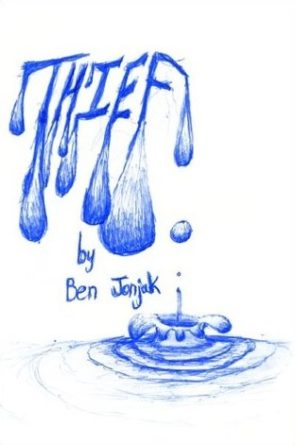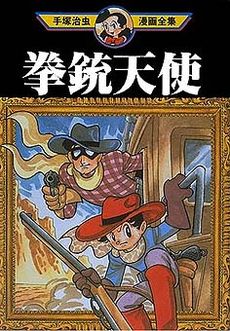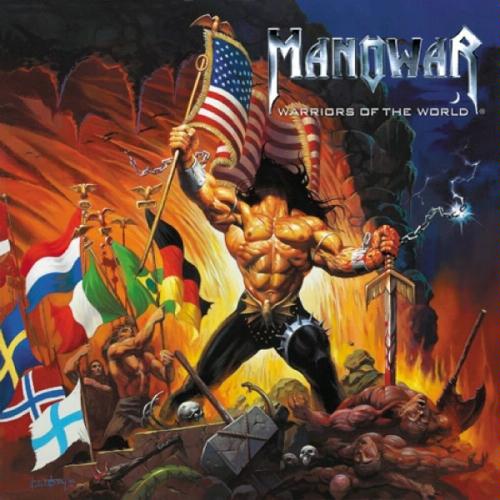
This is a self-published novella (back from the old POD days of LuLu and iUniverse, when this cost money) about a thief on the streets of Lima.
He starts out as an orphan. He gets snatched by a professional beggar who uses him as a prop to gain sympathy from tourists. He gets adopted by a pedophile priest who rapes him. And so on, and so forth. The book doesn’t do subtlety.
Thief is annoying and overbearing even by self-pub standards. Ben Jonjak takes apart the fourth wall with a wrecking ball, interrupting his story sometimes multiple times per page to rant directly to the reader about global poverty and rich Americans and white people and Oprah. Thief is one of those books that shouts stage directions at you. “Isn’t this sad? Isn’t this outrageous?” This is a hallmark of a poor writer: telling the reader what to think and feel instead of allowing those things to happen naturally.
Nobody edited this book – maybe it’s from a country where red pens are illegal. Witness the main character’s name suddenly change from “Junior” to “Patch” without explanation, punctuation both missing where it belongs and added where it doesn’t, countless orphan clauses (appropriate?), as well as lapses into outright illiteracy (an actual quote: “Take it! Seize it! Warship every day as a Devine blessing to mold yourself into a keen, perfect thing.” Calm down, Down Syndrome Tony Robbins.)
So the book has problems. It’s awkward and is barely written in English at times. But I’ll say this: although I often put the book down, I always picked it back up again. It’s strangely interesting.
The author lives in Peru, and the book evokes a convincing milieau (note that I say convincing, not realistic). Even the self-indulgent parts – by way of a foreword, he spends a few pages complaining about how someone stole his wallet – add to the lived-in quality.
And there’s actually a fairly strong story here, particularly in the final section the thief finally starts getting proactive about changing his situation. Part of what’s frustrating about Thief is that it often ignores human agency – Junior/Patch is just a punching bag for fate. In the final pages it’s nice to see him fighting back at last, even if it’s in the worst way possible.
Thief is as obscure as small press books can get without being published in an enclosed bomb shelter, and the author appears to have given himself positive Amazon reviews under a fake name, which is a shame. But I don’t feel robbed by Thief. Self-published books are often shit but they’re also often compelling, and this book manages to be both.
 Stack all Osamu Tezuka’s comics in descending order of quality, travel downward about fifty thousand pages, and you arrive at things like Angel Gunfighter. Welcome to the land of Osamu Mehzuka.
Stack all Osamu Tezuka’s comics in descending order of quality, travel downward about fifty thousand pages, and you arrive at things like Angel Gunfighter. Welcome to the land of Osamu Mehzuka.
Angel Gunfighter was serialised in 1948, and is interesting because it shows the influence Western animation had on anime’s early years. The characters’ limbs have a boneless “rubber hose” quality similar to Mickey Mouse and Felix the Cat, and various other things seem redolent of the 1930s golden age, too.
This manga is Western in a couple of senses. For one, it is set in our romanticised version of the Wild West, complete with bars with batwing doors and random barrels that exist to get shot and leak liquid out of perfect bullet holes. For another, it’s Western in its storytelling aesthetic, too: plucky underdog trying to get the girl, and all that. I sort of wish Tezuka had done a more Japanese take on this kind of story. American art is well known for borrowing ideas from Japan (The Hidden Fortress becoming Star Wars, to use a famous example), and I suppose the reverse is true over there.
There’s a brief dramatis personae where we learn about the characters (Ham Egg, the rogue cop trying to take over the town – Monster, the half-Indian sharpshooter who is trying to stop said rogue cop from taking over the town, etc). Angel Gunfighter is a one volume manga, so there’s no question of the characterisation being presented organically in the story. There’s a couple of supporting characters who don’t have much to do. One suspects Osamu Tezuka was just importing Western tropes without considering whether the story had a use for them.
Occasionally Tezuka’s formidable imagination takes flight in spite of itself (I liked the farmer who has trained his pigs to be soldiers). These scenes of inspiration are fairly rare, and the comic spends much of its time reciting Western cliches like some sort of catechism. There’s whooping Indians on horses descending on hapless caravans, and a dame who gets tied to train tracks, and a couple of gunfights that end with someone dangling off a cliff.
Monster is a particular problem. He’s perfect, anodyne, and Mary-Sueish – therefore, boring. I like Ham Egg. He’s such a violent bully that interesting things happen by simple dint of him getting page time.
The comic is fun and action-packed, and full of nice visual gags. But it doesn’t stick with you. The scenario is hopelessly familiar, the art is derivative of Walt Disney, and the storytelling is workmanlike. I assume Tezuka was cranking this stuff out at his usual twenty pages a day to meet a deadline. It’s entertaining, especially if you’re a kid, but it’s the kind of comic you can be distracted from by a passing fly.
 Good album, shit tracklisting. They open with an obvious Manowar crusher, follow it with six ballads/operas/studio experiments, and then run three fast metal songs back to back to back to back, giving you no space to breathe.
Good album, shit tracklisting. They open with an obvious Manowar crusher, follow it with six ballads/operas/studio experiments, and then run three fast metal songs back to back to back to back, giving you no space to breathe.
If you want to get the most out of Warriors of the World, perform the following surgery. 1) include the two songs from the Dawn of Battle EP. They’re great songs, and there’s no reason they shouldn’t be on the album. 2) Delete “The March”, “Valhalla”. While we’re in the neighbourhood, delete “An American Trilogy” and then reformat your hard drive just to destroy all traces of it – worthless song. 3) Redistribute the three speed metal songs at the end so that there’s more variety in the pacing. You’ll be left with something a bit like this.
1. Call to Arms
2. The Dawn of Battle
3. Warriors of the World United
4. Swords in the Wind
5. Hand of Doom
6. I Believe
7. The Fight for Freedom
8. House of Death
9. Fight Until We Die
10. Nessum Dorma
It’s a shame when fans have to do the musicians’ work, but the album’s current tracklisting makes no sense and creates an odd listening experience. Which is frustrating, because Warriors is a good album.
Some songs, in fact, reach beyond good and enter the state of excellent. “Call to Arms” takes me into a state of ecstasy every time I hear it. “Warriors of the World United” is another slow one with a powerful chorus, reminiscent of RJD-era Black Sabbath. “I Believe” is Manowar in full cheese mode, while “The Fight for Freedom” and “Swords in the Wind” are epic ballads. “Nessum Dorma” is an Puccini opera aria, which Eric obviously nails. The band likes performing this song in Italian when playing in Italy, as part of their multilingual obsession that has culminated in feats such as recording a single song in sixteen different languages.
“House of Death” is the kind of full-throttle mayhem the band does so well, while “Hand of Doom” sugars things up with some dramatic pad sounds and wild sweep-picked arpeggios courtesy of Karl Logan. “Fight Until We Die” is another fast one, full of menace and aggression. But the greatest speed metal song on offer is definitely “The Dawn of Battle”, which is so cool I can barely put it in words. My soul has been healed, by the power of steel!
The loyalty of Manowar fans despite everything the band has done wrong is part inspiring and part horrifying, and draws comparisons to battered wives and abused dogs. IThere’s a sucker born every minute, and no doubt a sucker listening to a Manowar album every minute, too. I continue to love Manowar and their music, even though I think Joey DeMaio is an abusive lunatic and the rest of the band are enablers and catspaws. The tracklisting on this album is ghastly, and some of the songs rank among the worst things Manowar has yet conceived. But there’s a still a good fixer-upper of an album here, and if you want to put in some extra work, it could actually be described as great.



